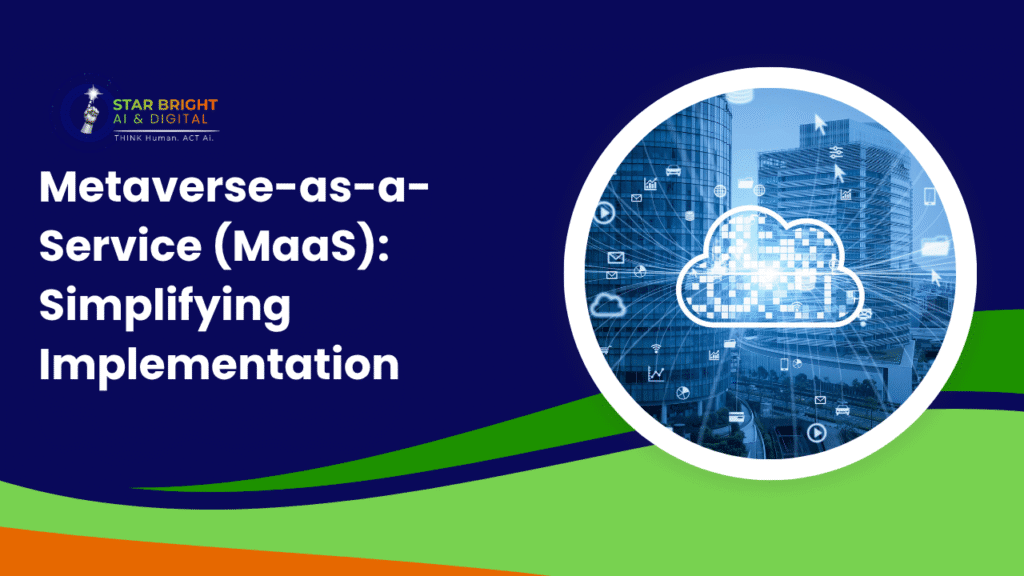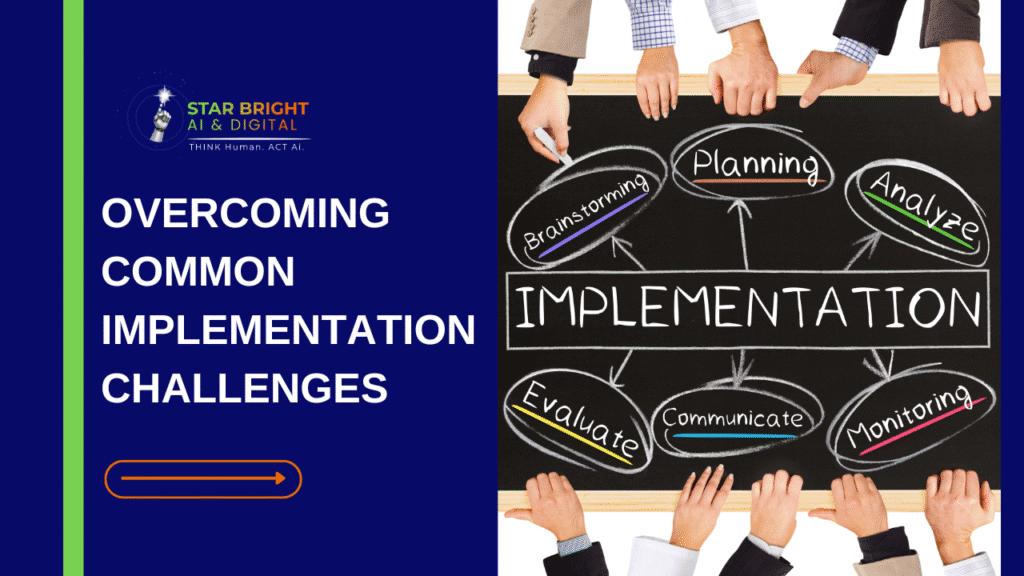Picture this: A major retail chain just lost 40% of its Gen Z customers to a competitor who created virtual showrooms where customers can try products with their friends from different continents. Meanwhile, a traditional office-based company watched its top talent leave for companies offering immersive virtual workspaces that feel more engaging than their sterile conference rooms. These aren’t hypothetical scenarios – they’re happening right now in 2025. The businesses thriving today aren’t just adapting to the metaverse; they’re building comprehensive business metaverse strategy 2025 frameworks that transform how they connect with customers and employees.
The Current State of Business in the Metaverse
The metaverse landscape has matured significantly, and businesses can no longer treat it as experimental technology. Companies implementing a robust business metaverse strategy 2025 report average revenue increases of 35% within the first year. Major corporations like Nike, Gucci, and JP Morgan have already established permanent virtual presences, generating millions in additional revenue.
The gap between early adopters and laggards continues to widen. Companies that started developing their business metaverse strategy 2025 in early 2024 now have significant competitive advantages. They’ve refined their virtual environments, trained their teams, and established customer bases that newer entrants struggle to capture.
Enterprise Metaverse Use Cases That Drive Real Results
Retail businesses are experiencing remarkable success through enterprise metaverse use cases that focus on immersive customer engagement. Virtual stores allow customers to examine products in detail, try them on digitally, and make purchases without leaving their homes. These enterprise metaverse use cases generate conversion rates 40% higher than traditional e-commerce platforms.
Key retail implementations include:
- Virtual fitting rooms where customers see clothes on their actual body types
- Interactive product demonstrations that showcase features in 3D environments
- Social shopping experiences where friends can shop together from different locations
- Virtual showrooms for home improvement and furniture visualization
These enterprise metaverse use cases demonstrate how immersive customer engagement creates deeper connections between brands and consumers.
Financial Services Innovation
Banks and financial institutions are implementing enterprise metaverse use cases that simplify complex transactions. Virtual financial advisors provide personalized consultations in comfortable, private environments. Customers can visualize their investment portfolios as interactive 3D models, making abstract concepts tangible and understandable.
Insurance companies use immersive customer engagement to help clients understand policy details through virtual scenarios. These enterprise metaverse use cases reduce confusion and increase customer satisfaction while lowering support costs.
Healthcare and Medical Training
Healthcare providers are discovering powerful enterprise metaverse use cases that improve patient outcomes. Virtual consultations feel more personal than video calls, while medical training simulations provide risk-free learning environments.
Immersive Customer Engagement: The New Standard
Traditional customer service feels outdated compared to immersive customer engagement experiences. Customers now expect interactions that go beyond phone calls and chat windows. They want to feel presence, connection, and genuine understanding from brands. Immersive customer engagement creates emotional connections that drive loyalty. When customers can walk through virtual spaces, interact with products naturally, and receive personalized attention from virtual representatives, they develop stronger relationships with brands. These connections translate directly into increased lifetime customer value.
Measuring Immersive Customer Engagement Success
Companies tracking immersive customer engagement metrics report significant improvements across key performance indicators. Average session times increase by 300% compared to traditional websites. Customer satisfaction scores improve by an average of 45% when brands implement thoughtful, immersive customer engagement strategies.
Virtual Workspace ROI: Transforming How Teams Collaborate
The shift to virtual workspaces isn’t just about remote work, it’s about creating collaborative environments that surpass physical offices. Companies measuring virtual workspace ROI find that properly implemented metaverse offices increase productivity by 25% while reducing real estate costs by up to 60%.
Key Benefits of Virtual Workspaces
Virtual workspace ROI becomes apparent when teams can collaborate naturally across distances. Modern virtual environments enable:
- Engineers manipulating 3D models together in real-time
- Architects walk clients through buildings before construction begins
- Marketing teams brainstorm in visual environments that spark creativity
- Global teams meeting in branded virtual spaces that reflect company culture
These scenarios demonstrate clear virtual workspace ROI through improved outcomes and reduced project timelines.
Calculating Virtual Workspace ROI
Measuring virtual workspace ROI requires looking beyond simple cost savings. While reduced office expenses provide immediate benefits, the real value comes from improved team performance. Companies report that virtual workspace ROI includes:
- Faster decision-making through immersive collaborative sessions
- Better project coordination with visual progress tracking
- Increased employee engagement and job satisfaction
- Reduced travel costs for meetings and training sessions
Training costs decrease significantly when new employees can learn in virtual environments that simulate real situations without real consequences. This aspect of virtual workspace ROI often surprises executives who focus primarily on real estate savings.
Employee Retention and Satisfaction
Employee retention improves when companies offer engaging virtual workspaces. Top talent increasingly prefers employers who provide flexible, technology-forward work environments.
Metaverse-as-a-Service (MaaS): Simplifying Implementation

Many businesses hesitate to develop metaverse capabilities due to perceived complexity and cost. Metaverse-as-a-Service (MaaS) solutions address these concerns by providing ready-to-use virtual environments that businesses can customize for their specific needs.
Benefits of Metaverse-as-a-Service (MaaS)
Metaverse-as-a-Service (MaaS) platforms handle technical infrastructure while businesses focus on content and customer experience. Key advantages include:
- Reduced implementation time from months to weeks
- Lower initial investment requirements compared to custom development
- Professional technical support for platform maintenance and updates
- Scalable solutions that grow with your business needs
The Metaverse-as-a-Service (MaaS) model allows businesses to test metaverse concepts without massive upfront commitments. Companies can experiment with different virtual environments, measure results, and scale successful implementations gradually.
Choosing the Right Metaverse-as-a-Service (MaaS) Provider
Evaluating Metaverse-as-a-Service (MaaS) options requires understanding your specific business needs. Consider these factors:
- • Industry specialization and relevant experience
- • Integration capabilities with existing business systems
- • Customization options and branding flexibility
- • Security standards and compliance certifications
- • Pricing models that align with your budget and growth plans
Security and data privacy become critical when selecting Metaverse-as-a-Service (MaaS) solutions. Ensure your chosen platform meets industry standards and provides transparent data handling policies. The wrong Metaverse-as-a-Service (MaaS) choice can create compliance issues and damage customer trust.
Building Your Business Metaverse Strategy 2025
Creating an effective business metaverse strategy 2025 starts with understanding your customers’ current pain points and desires. The most successful implementations solve existing problems rather than creating new experiences for their own sake.
Strategic Planning Fundamentals
Your business metaverse strategy 2025 should align with broader company objectives. Phased implementation often works better than attempting comprehensive launches. Your business metaverse strategy 2025 might begin with a single use case, measure results, and expand based on learning. This approach reduces risk while building internal expertise and confidence.
Essential Components of Business Metaverse Strategy 2025
Technical infrastructure forms the foundation of any business metaverse strategy 2025. Content creation capabilities become crucial as your business metaverse strategy 2025 evolves. Whether you develop internal teams or work with external creators, having consistent, high-quality content production ensures ongoing success.
Training and Change Management
Training programs help employees adapt to new tools and processes. Your business metaverse strategy 2025 should include some comprehensive education initiatives for all skill levels and regular workshops on emerging metaverse technologies. These programs build confidence and competence across your organization.
Overcoming Common Implementation Challenges

Many businesses struggle with user adoption when implementing metaverse solutions. Success requires making virtual experiences feel natural and valuable rather than forced or gimmicky.
User Adoption Strategies
Focus on solving real problems and providing genuine benefits to ensure positive reception. Effective approaches include: • Starting with willing early adopters who can become internal champions • Providing clear value propositions for each user group • Offering optional participation rather than mandatory adoption • Gathering feedback and iterating based on user experiences
Technical and Budget Considerations
Technical complexity can overwhelm organizations without strong IT capabilities. Working with experienced partners and choosing user-friendly platforms helps businesses avoid common pitfalls and achieve faster success. Budget concerns often limit metaverse initiatives. However, companies that view metaverse investments as strategic rather than experimental typically allocate sufficient resources for meaningful implementations. The cost of not having a business metaverse strategy 2025 often exceeds the investment required for success.
Measuring Success and ROI
Establishing clear metrics before launching metaverse initiatives helps demonstrate value and guide optimization efforts. Track engagement levels, conversion rates, customer satisfaction, and cost savings to build comprehensive success pictures.
Regular assessment allows for continuous improvement. Compare metaverse initiative results against traditional approaches to quantify benefits. This comparison helps justify continued investment and identifies areas where virtual solutions provide the greatest advantages.
Future-Proofing Your Metaverse Investment
Technology will continue advancing, but the fundamental principles of good customer experience remain constant. Build flexible systems that can incorporate new capabilities without requiring complete rebuilds.
Stay connected with industry developments and emerging platforms. Invest in your team’s skills and knowledge. The businesses that succeed in the metaverse long-term are those with employees who understand both the technology and the strategic applications.
The Time to Act Is Now
The metaverse represents more than just technological advancement; it’s a fundamental shift in how businesses connect with customers and empower employees. The opportunity window won’t remain open indefinitely. Early movers are establishing market positions and customer relationships that will be difficult for later entrants to challenge. Your business metaverse strategy 2025 needs to move from planning to implementation immediately.
The question isn’t whether your business should develop a metaverse presence – it’s whether you’ll lead the transformation or follow others who recognized the opportunity first. Your business metaverse strategy 2025 determines which path you’ll take. The businesses that thrive in tomorrow’s economy are the ones making these decisions today.
Transform your business metaverse strategy today.
Star Bright AI & Digital — Think Human. Act AI.

